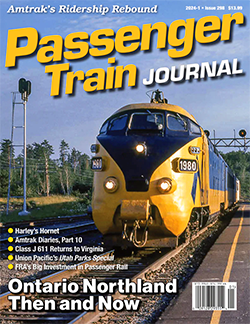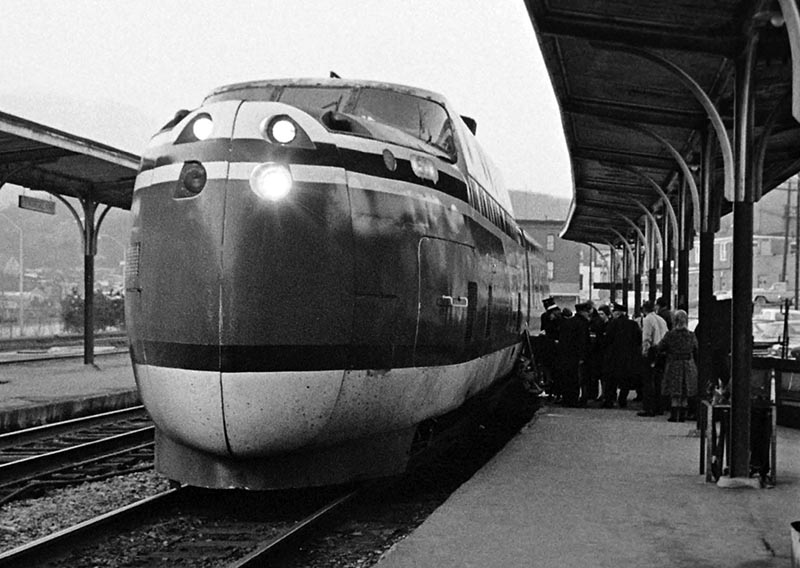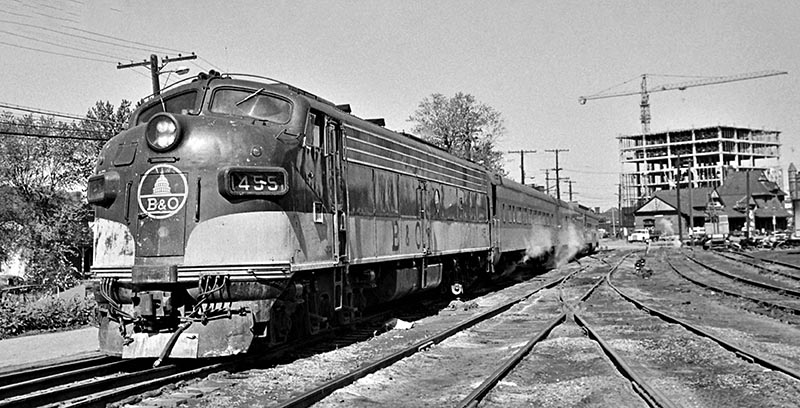 by Bill Anderson/photos as noted
by Bill Anderson/photos as noted
In the 1970s, to get anything done involving railroads that required some approval from the U.S. Congress meant going through Harley O. Staggers (1907-1991). He was chairman of the House Committee on Interstate and Foreign Commerce, an influential group that dealt with railroad matters. He joined the U.S. House of Representatives in January 1949, and was to serve in that position consecutively for 32 years.
As a native and life-long resident of Keyser, W.Va., one can be sure that Mr. Staggers had some personal connection with railroads. Baltimore & Ohio’s (B&O) Washington–St. Louis main line served the little town of Keyser, and, as his political career advanced, it is likely that B&O management and Mr. Staggers were on a first-name basis.
As Amtrak’s day to assume the operation of intercity passenger trains approached, all but one of B&O’s fleet of passenger trains that had served Keyser had been consigned to history. The train that was left, the Metropolitan, was at best a token that made a daylight trip between Washington, D.C., and Cincinnati. B&O’s timetable advised that food could be purchased at Cumberland, Grafton, and Clarksburg during station stops. Between Washington, D.C., and Cumber-land, the Metropolitan was attached to a Washington, D.C.–Akron, Ohio, train, the Shenandoah, that rated a “Food Bar Coach.”
With its already weak ridership, Amtrak’s planners had virtually no reason to include this B&O route in the basic national system. So, by the end of April 1971, the Metropolitan joined its discontinued brethren trains that had previously disappeared.
However, Rep. Staggers deemed it appropriate to support the voters of northern West Virginia who wanted a passenger train. His pressure produced results. Just four months later, on September 8, 1971, the first of a decade-long series of trains that would burnish the rails in the northern part of West Virginia began operating. “Harley’s Hornet” was born.
The West Virginian
Suitably named for the key geography and purpose it would serve, Amtrak’s West Virginian restored rail passenger service on B&O as far west from Washington, D.C., as Parkersburg, a distance of 351 miles. The train’s schedule had a dual purpose, bifurcated between week-days and weekends/holidays.
The weekday train departed Washing-ton, D.C., at 4:45PM and was effectively an express option for riders who commuted to work in Washington, D.C., from stops as far west as Martinsburg, W.Va., a distance of 73 miles. The vast majority of the westbound riders rode just over 20 percent of the train’s total distance. Passengers could ride as little as the seven miles to Silver Spring, Md., for one dollar.
While this schedule was good for commuters and other passengers as far as Keyser, the remainder of the stops were late at night. The final stop, in Parkersburg, was at 1:59AM. The eastbound return had similar challenges with a 4:00AM departure from Parkersburg. Stops from Keyser and east were at decent times in the morning for an 11:45AM Washington, D.C., arrival.
However, on weekends and holidays, the train provided a daytime trip in each direction, departing Washington, D.C., at 11:00AM and Parkersburg at 10:00AM. The trains’ elapsed travel time was nine hours 15 minutes, about 30 minutes longer than the mid-1950s schedule for the National Limited that had fewer stops.
Although Amtrak’s first listing for the West Virginian, in its November 14, 1971, timetable, provided no specific consist in-formation, the train appeared to be a re-incarnation of the final, pre-Amtrak B&O train: a coach and a food-service coach. But hang on — the basic train that started the Harley’s Hornet legacy was soon to have a one-of-a-kind upgrade.

ABOVE: A small crowd boarding the Potomac Turbo in Cumberland, Md., was the first sizable group of passen-gers for this weekend eastbound train. —Bill Anderson photo
The Potomac Turbo and West Virginian
Five months after the first West Virginian set sail, the B&O line west to Parkersburg went “experimental” on February 7, 1972. The weekday schedules and one of the two weekend/holiday trains became Turbos. One of the two United Aircraft Turbotrains that had been running between New York City and Boston became the scheduled consist, giving Harley’s Hornet a new dimension.
While riders on most other Northeastern Amtrak routes were dealing with the trials and tribulations caused by various assortments of older cars, the commuters and a few intercity travelers on the route to Parkersburg were treated to the latest and greatest. Amtrak advertised that the Potomac Turbo had “stereo music, delicious meals, snacks, refreshments, deep adjustable seating, ‘vista dome’ viewing areas plus unique suspension for speed and comfort.” What more could anyone want?



